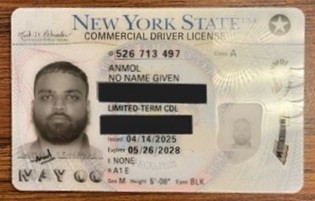State Applies for High Speed Rail Funds
The competitive grant program is a part of the American Recovery and Reinvestment Act of 2009 (ARRA) and advances the Obama Administration's vision for HSIPR throughout the nation. After the October 2 deadline to submit applications, the FRA announced that it had received proposals from 24 states seeking $50 billion for high-speed rail projects, more than six times the money designated in the economic stimulus plan. The $8 billion available through the stimulus bill could be followed up with even more money. The Obama administration hopes to spend an additional $1 billion a year on high-speed rail for at least five years through the FRA budget.
Environmentalists and government planners offer HSIPR as an environmentally friendly alternative to driving and air travel. Upon entering the White House, Obama has been promoting HSIPR. This contrasts with the Bush administration which shut down some uneconomical passenger routes run by the Amtrak, the federally subsidized rail passenger carrier. On his European trip last spring, which some labeled as the "Obama Blame America Tour," the president commented on April 3 in Strasbourg, France that "I am always jealous about European trains."
Oklahoma City, Tulsa, San Antonio, Dallas/Fort Worth, Austin and Little Rock are part of the south central corridor, which was one of 10 identified by the FRA for potential HSIPR projects. After Oklahoma was designated as part of the HSIPR corridor in 2000, ODOT began preparation for the grant application process. So when President Obama announced in April that $8 billion was included in the $787 billion economic stimulus package for HSIPR development, Oklahoma was ready to move ahead with their application.
The proposal route would follow the Missouri, Kansas and Texas Railroad right-of-way north to Interstate-44 (Turner Turnpike) and then parallel I-44 toward Tulsa. Near Sapulpa, the rail line would cross I-44 and tie to an existing state-owned rail line and then connect to the BNSF track for the remaining 19-mile route into Tulsa's Union Station.
It is proposed that two trains would make six trips each day running at speeds in excess of 150 miles per hour with an average speed of more than 110 mph. ODOT estimates there would be 1,400 riders each day. A trip from downtown to downtown between Oklahoma City and Tulsa would take less than an hour. ODOT says the state would need to expand the right-of-way and would condemn the adjoining properties if necessary. It is expected that the trains could be operational in as little as six years.
The Heartland Flyer, Oklahoma's existing passenger rail service, would be upgraded to higher speeds. The Heartland Flyer runs from Oklahoma City to Fort Worth, once a day. Top speeds for the Heartland Flyer, which provides service between Oklahoma City and Fort Worth, Texas, would be 90 mph, with an average of more than 60 mph. Improvements on the route would include rail crossing safety upgrades, a passing track, a double track between Oklahoma City and Norman and switch improvements.
As with other portions of the stimulus package, some are concerned about the future spending of state and local tax dollars. The cost to operate and maintain the rail line is estimated to be over $20 million per year. Those costs would likely be shared through a partnership between the state and the two cities. Federal and state subsidies for Oklahoma's "Heartland Flyer" continues with ridership failing to reach an economical level.
Officials say they hope the state's rail line eventually could be extended north from Tulsa to Kansas City, Missouri, or St. Louis and possibly Chicago. Eventually the route may be expanded south to San Antonio.
The FRA anticipates announcing the final awards for the grants by the end of the year.










Latest Commentary
Thursday 30th of October 2025
Thursday 30th of October 2025
Thursday 30th of October 2025
Thursday 30th of October 2025
Thursday 30th of October 2025
Thursday 30th of October 2025
Thursday 30th of October 2025
Thursday 30th of October 2025
Thursday 30th of October 2025